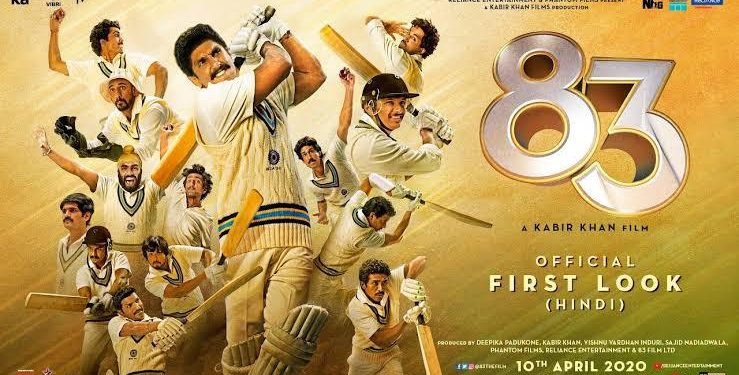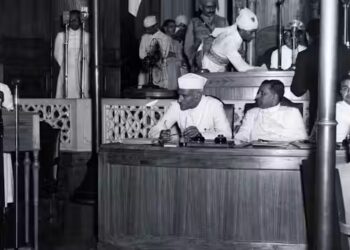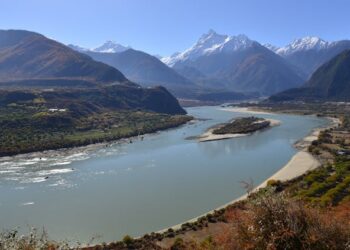Why the new film ’83’, despite misrepresenting its time in the name of ‘drama’, and getting its soul wrong, is still watchable?
For me, the most surprising thing about “83” is how regressive the film feels. Not in terms of social reality but sensibility. That even “Lagaan”, which released 20 years ago, seems a more contemporary film today should actually be a matter of shame for the team that made “83”.
This is supposedly the most expensive Hindi film ever made, because of the humongous (and utterly irrational) amounts paid out in rights in various quarters. That handicaps it in terrible ways, as the burden of commercial viability is enormous, perhaps unprecedented, given that the film cannot accommodate many commercial tropes within this story. So, it overcompensates for that with unimaginative, transparently insecure, second-guessed broad-basing.
It’s truly a pity as this is, without exception, and without argument, the greatest underdog story in the history of cricket, not just Indian cricket. The broad Bollywood strokes and the shabbiness in basic storytelling makes it more like a middle-of-the-road extended 1990s advertising film, with silly gimmicks (like Mohinder Amarnath playing his own father tackily or Kapil Dev catching the ball in the crowd hit by his screen persona), clunky staging and amateurish characterisation. That it is still watchable and even fun, in a detached way (if you grit your teeth and withstand those executive-looking idiots in the front row behaving like they’re in a banquet hall celebrating their year-end billings, mobile phone and loud chatter in full play), is a pointer to how potent this story is. But also how much of a missed opportunity it is.
The typical Bollywood propensity to lie barefaced about facts for the sake of “drama” is amply in play here too. No, the India-Zimbabwe match where Kapil Dev scored that once-in-a-lifetime 175 was NOT a “do-or-die” match for India. Due to Australia having lost their first match to Zimbabwe, even if India had lost to Zimbabwe in that game, they would have reached the semis if they beat Australia in their last group game. So, actually, the match against Australia was a more crucial one (even after they beat Zimbabwe) – which is rather cavalierly covered in the film. In that match too, India was in trouble – at the half-way stage, after India had scored 247, Farokh Engineer (who was rather bi-polar in commentary then, very unimaginatively and tepidly portrayed by Boman Irani in the film), had actually said that India had no chance and it would be “a piece of cake” for Australia. Roger Binny’s stunning bowling performance (4-29) there has far greater historical significance, as does Sandeep Patil’s knock in the semifinal, when he knocked off 51 off 32 balls, a scarcely believable equation in those times, after walking in to bat at a knife’s edge 142-3 with 72 still required (not many remember/ know that Pakistan failed to get a good score from exactly that position in the other semifinal against West Indies, that was going on simultaneously). Apparently, real-life drama is never enough for Bollywood (though, one should be grateful at least that Kapil’s 175 did not come in the World Cup final in the Bollywood version, as I’d feared might happen when “Dangal” had released exactly 5 years ago).
Follow NRI Affairs on Facebook and Twitter for latest updates.
Equally, Tony Greig’s infamous “we’re going to make the Windies grovel” comment happened in 1976, after West Indies had won the 1975 World Cup and had zero bearing on the 1979 World Cup. In this Bollywood version, that was the reason West Indies won two World Cups. Even the act of Indian crowds watching West Indies collapse on TV is a lie (Haynes-Richards-Gomes), as Doordarshan had broken for its news bulletin when that drama occurred. Nor did the reactions in India resemble anything like that – it was much more like dazed curiosity followed by scarcely believable delight.
More than anything else, the very ethos of the film is a lie. 60-over ODI cricket in England (the first three World Cups were played in these circumstances) was very similar to Test cricket. Depicting the play in the middle like illiterate T20 highlights is a betrayal of the sport and its history, and the qualifier of “in the name of drama” does not cut it. The spectator energy and general vibe is all wrong too – those were much more restrained times, and nationalism did not resemble the insular euphoria of post-liberalisation India (that manifested most emphatically when India won the 2011 World Cup). This is not a superficial discrepancy; it is a fundamental misrepresentation of that moment’s soul.
The stories that actually led to the 1983 triumph are actually enormously interesting, with considerable dramatic possibilities; an imaginative treatment would have woven these in this narrative itself. Mohinder Amarnath’s travails with fast bowling and what he did to overcome it before his spectacular comeback in 1982 and his performances just three months before this in the West Indies that made both Gavaskar and Viv Richards hail him as the “best batsman in the world” – that’s one of the most inspiring stories in cricket history (instead, the infantile way his relationship with father Lala is shown is a gross disservice to their stories). Sandeep Patil’s emergence as a batsman in 1981/82 and what he brought to this team. Ditto with Roger Binny and Madan Lal with the ball in those conditions. The ODI win against West Indies in their backyard in Guyana less than three months before (where Kapil Dev and Gavaskar had combined potently) which gives significant context to India’s 1983 World Cup campaign, especially against West Indies.
The idea of dramatising “where were you when India won the 1983 World Cup” in various hues is a very good one, but so shabbily and tackily done that it becomes almost a self-parody. The music is ludicrous anodyne contemporary ear candy, a great opportunity lost to capture that period’s true ethos. The performances (especially of Ranveer Singh as Kapil Dev) are actually rather good, as is the picturised cricket action in the middle, but let down by a fundamental lack of creative ambition (rather like Amazon Prime’s series “Inside Edge”).
This hastily-narrated, half-baked, heavy-handed film (that actually might have worked much better as an OTT show) could have been a shining jewel providing memorable cultural capital internationally (especially in cricket-playing countries), but ends up as forgettable dross. Still, its historic value and commercial viability are both served by that incredible story at the centre of it all. And that is what makes this a very watchable venture, with compulsorily reduced expectations.











